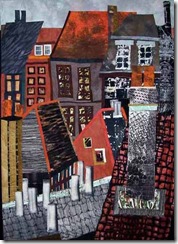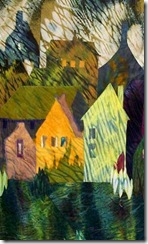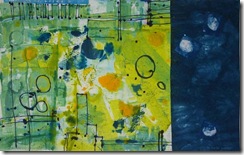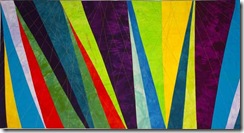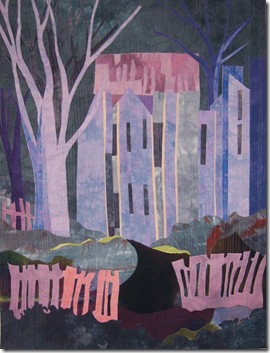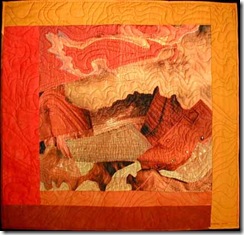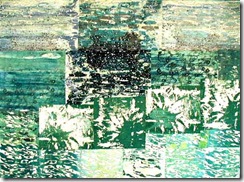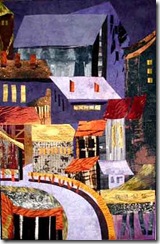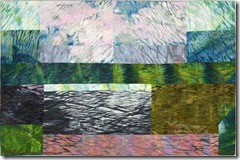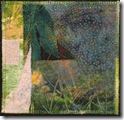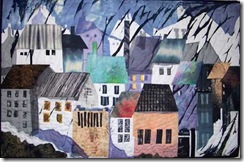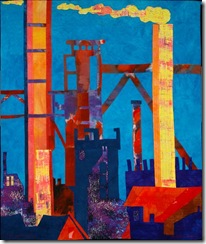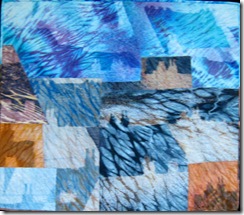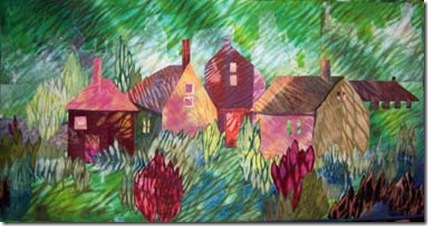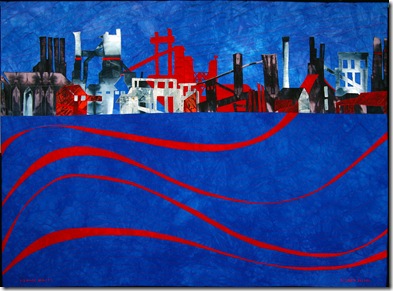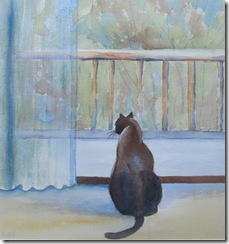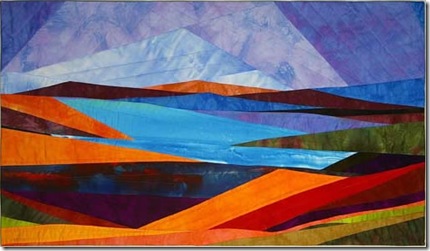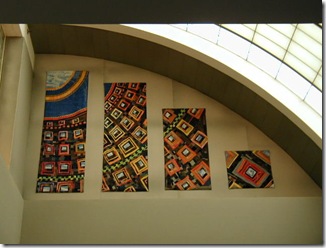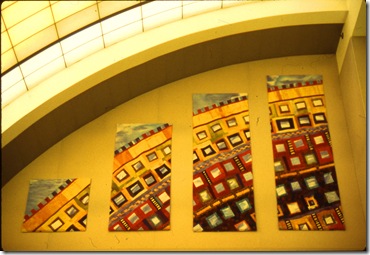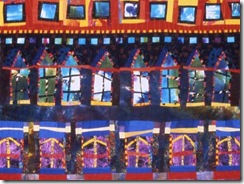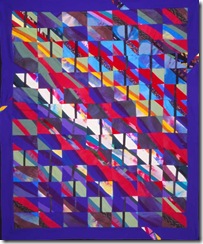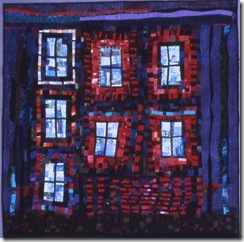While I don’t remember ever really thinking about this for my quilts, it’s taking me so much longer to acquire a style in watercolor that it is something for recent cogitation. With quilts I’ve always just made what has really fascinated me at the time with what seemed like the most appropriate techniques. People say I have “a style” but to be honest I think that most of them only think about the early cityscapes – I did make a lot of them – actually in just adding them up now I’ve realized I made about 100 of them! Not quite half my oeuvre. But that does leave an awful lot that are not cityscapes.
Not only:
but also:
E. H. Gombrich, in his book Art and Illusion, suggests that style is similar to having an “accent” – motor habits acquired early in one’s artistic experience. He also feels that the
“ skill of the hand in art, like the skill of the throat in language, develops as a result of the awareness of differences that have to be observed, or pointed out” which, I think, implies conscious learning whether assisted by a teacher or not.
An artist who copies a painting by another, such as Van Gogh’s many copies of Millet’s paintings
http://www.vggallery.com/influences/millet/main.htm
will still use his own style or schemata.
The artist is likely to create the “replica” in the way he/she has already been taught, the way that he/she has done it since they began making art. One’s earliest models and teachers, therefore, are most influential in the style that one later develops. Gombrich felt that Van Gogh repeated Millet’s visual statements with a strong Van Goghian accent: “the microstructure of movement and shapes that becomes the inimitable personal accent of the artist”. Many try to analyze artists’ style like this, i.e. with very concrete steps. I’ve always been surprised when a person says to me “oh you have a distinctive style” and I reply “and what does it consist of?”’ for their answers often seemed extremely global and simplistic. It’s like saying who am I? And the answer relates only to age, sex, weight, height and hair-do (or lack thereof!).
So I feel that, while “style” does refer to themes (like cityscapes, or Wolf Kahn’s barns), more importantly it relates to how you cut the fabric, to the sort of fabric you use, the kind of shapes and lines you prefer, the way you arrange those shapes and lines, the colors you like and how you arrange them, your use of certain kinds of value patterns and particular textures. Some peoples’ styles are more analyzeable than others. Take Jan Myers Newbury: the texture of the fabric is nearly always that of arashi shibori, the edges of the pieces are always straight, the compositions abstract and geometric.
However, it is clear that if a beginner tries to copy a specific style, it’s pretty evident that they are a beginner and it’s only in skilled hands that an effective copy can be made. Friedlander felt that the recognition of a personal style was more a matter of intuition based upon experience.
It might be truer to say that the personal style of any given artist might not be the result of individual peculiarities and particularities which can be listed separately but rather by an analysis of the relationships of all the parts of the piece, of the interaction of many personal choices at each stage of the composition thus leading to a compilation of sequences of effects that would be perceived as a whole. Some think it would take a meeting between both expert forgers and experienced connoisseurs of that particular medium in order to agree on the exact criteria that constituted a particular person’s style!
Gombrich feels that as verbal language conveys not only the facts but also the feelings about an experience, so should one’s visual language in making art. This is a very telling summary – we are all aware of somebody telling a tale in a monotone without expression, like a child just learning to read who spaces out the words without any real awareness of the whole. Or someone learning to play an instrument who plays successive notes rather than phrases, and also in the next stage where they play absolutely technically accurate but cold and feelingless rendition of the music. Well, the same is true with our visual language in our art quilts, style is not only the accurate notes or words but also the characteristic emotional response to the story we are telling. Where you put yourself and your humanity into the piece.
Which brings me back to my own search for style in watercolor – I’ve got the techniques in art quilts down to a point where I can think more about the feeling (even though some judges still observe a slightly frayed note and go no further!), but with the watercolors I still need to reach that stage…I need to practice my scales more! But first, I think, a nice cuppa tea! If you have been, thanks for reading! And I’d love to read any comments about this topic – do you think you have a style? And if so, what does it consist of?
Elizabeth
